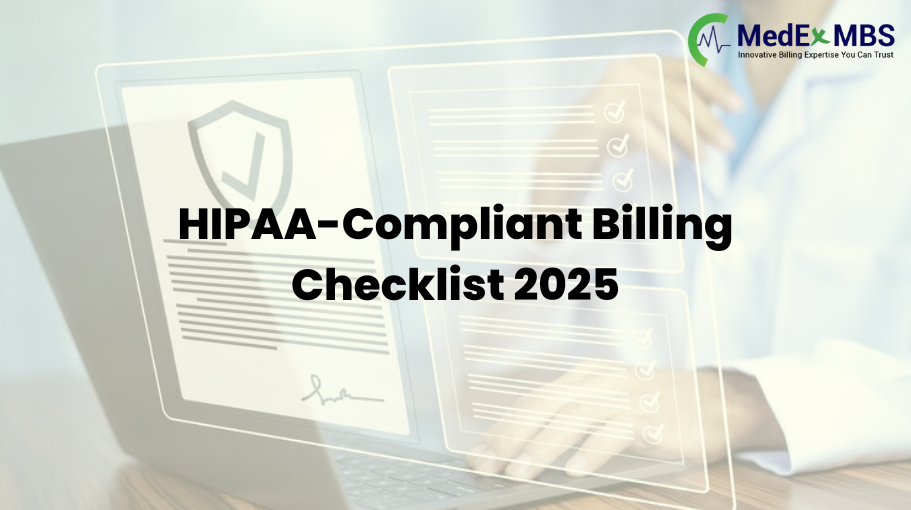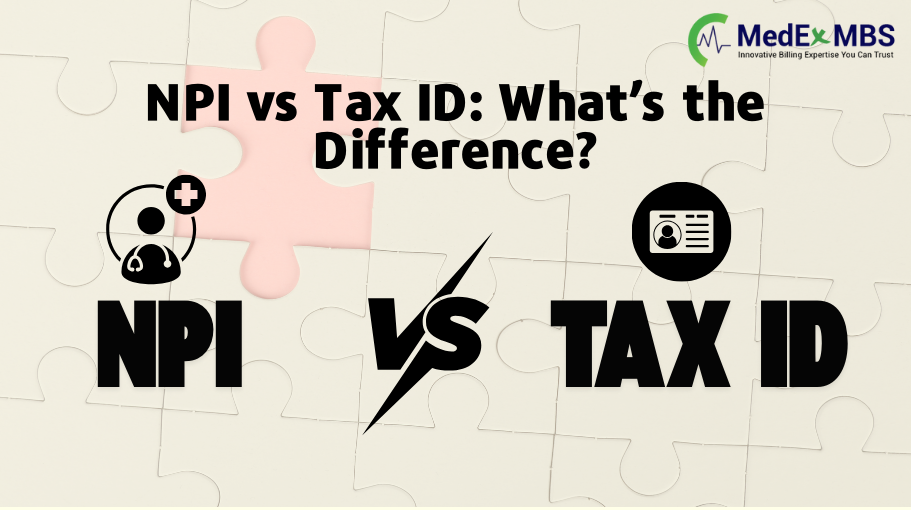HIPAA-Compliant Billing Checklist 2025

The complexity of HIPAA-compliant billing has increased significantly. In 2024, healthcare data breaches affected over 133 million records, and enforcement fines consistently exceeded $1 million for each violation. Healthcare organizations are encountering serious risks in this environment. The situation became even more complicated in 2025 when the Department of Health and Human Services (HHS) introduced the first significant update to the Security Rule since 2013. This update includes mandatory multi-factor authentication, encryption requirements, and much stricter oversight of vendors. For those managing a billing department, this means navigating evolving regulations while ensuring smooth operations and the protection of patient data. Regardless of whether you operate a small practice or a large healthcare provider, understanding these changes is crucial to avoid costly penalties and maintain patient trust. How Does HIPAA Influence Medical Billing? Let us begin with the fundamentals. It is essential to understand who is affected by HIPAA and how billing is integrated into these regulatory requirements. Who Must Comply with These Regulations Covered Entities: This includes healthcare providers, health plans, and clearinghouses that manage electronic health transactions. Business Associates: These are vendors and consultants who handle protected health information (PHI). The Three Primary Rules That Affect Billing Privacy Rule: Governs the usage, sharing, and disclosure of patient billing information. Breach Notification Rule: Outlines the procedures for reporting data breaches related to billing records and specifies the timing for such notifications. These regulations work in concert to ensure the security of patient data throughout the entire HIPAA-compliant billing process, from claim submission to payment processing. New HIPAA Compliance Obligations for 2025 The regulatory landscape has undergone significant changes this year. Significant Modifications to Security Regulations (January 2025) Mandatory Multi-Factor Authentication: Now a requirement for accessing the billing system Required Encryption: Both stored and in-transit data must be safeguarded Annual Penetration Testing: Yearly security assessments and biannual vulnerability scans are necessary 24-Hour Vendor Notifications: Business partners must inform you within a day if an issue arises Stricter Enforcement OCR investigations increased by 264% following the ransomware incidents of 2024 More severe penalties if patients experience delays in obtaining their billing records New 6-year mandate for retaining all compliance documentation These modifications have shifted the guidance from “you should probably do this” to “you absolutely must do this.” Proactively addressing these changes is essential to avoid penalties. 10-Point HIPAA-Compliant Billing Checklist for 2025 Conduct a Comprehensive Risk Assessment and Map Your Systems Begin with an exhaustive Security Risk Analysis that specifically targets your HIPAA-compliant billing systems. Document every piece of technology that interacts with electronic protected health information (ePHI) – including practice management systems, clearinghouses, vendor platforms, and more. Create a detailed map illustrating the flow of patient information throughout your billing process, from initial registration to the receipt of the final payment. It is advisable to update this map annually or whenever you introduce new billing software, alter your procedures, or engage new vendors. Your documentation should address the likelihood of various threats, the vulnerabilities identified, and the specific strategies you employed to mitigate each risk. Establish Multi-Factor Authentication (No Exceptions) The upcoming changes to the 2025 Security Rule make it abundantly clear: multi-factor authentication is no longer optional. Anyone accessing billing systems containing ePHI is required to implement it. Deploy it throughout the HIPAA-compliant billing infrastructure: Practice management systems Electronic health record platforms Clearinghouse portals Vendor billing applications Email systems that manage PHI Ensure that individuals are required to verify their identity through at least two methods (password plus phone or app verification). Your MFA system must integrate seamlessly with the existing workflows of your billing team – security measures should not hinder productivity. Encrypt All Data All ePHI within HIPAA-compliant billing must be encrypted, whether it resides on your servers or is transmitted between systems. This includes data stored on servers, laptops, mobile devices, and backup systems, as well as any information exchanged between systems, vendors, and clearinghouses. Verify that your billing software, practice management system, and third-party applications utilize robust encryption (AES-256 at a minimum). The 2025 regulations mandate encryption as a necessity, rather than a luxury. Regulate Access to Information (And Terminate It Promptly) Implement stringent controls so that your HIPAA-compliant billing team can only access the PHI necessary for their specific roles. Establish various user categories such as: Claims processors (limited to claim preparation and submission) Payment posters (focused on payment and adjustment tasks) Billing managers (granted full access along with audit capabilities) Crucially, you must have procedures in place to revoke access within one hour when an employee departs or changes positions. This swift termination of access is a significant aspect of the proposed 2025 updates and prevents unauthorized individuals from accessing sensitive billing information. Develop Your Emergency Response Strategy and Vendor Notification System Formulate a strategy specifically addressing HIPAA-compliant billing security issues, system breaches, ransomware incidents, and unauthorized access to PHI. Your strategy must delineate clear responsibilities, notification timelines, and recovery procedures. Revise every Business Associate Agreement to ensure that vendors are obligated to inform you within 24 hours if they activate their emergency protocols. Organize Your Security Assessments The proposed 2025 Security Rule mandates regular assessments that extend beyond basic risk evaluations. Ensure that a thorough penetration test of your HIPAA-compliant billing systems is conducted annually by certified security professionals. Additionally, perform vulnerability scans biannually to identify potential weaknesses within your network. Document all findings and the corrective actions taken. These records demonstrate your proactive management of security when regulators conduct inquiries. Monitor Everything and Conduct Regular Reviews Enable comprehensive logging across all HIPAA-compliant billing systems to monitor who accesses PHI, the timing of such access, and the actions taken. Your logs should include: Attempts to log in and access patterns Modifications to PHI and adjustments to claims Changes to system settings Unsuccessful access attempts and security notifications Review these logs monthly for any irregularities and perform formal compliance evaluations at least once a year. These assessments ought
NPI vs. Tax ID: What’s the Difference?

In the realm of medical billing, identifying providers is crucial for the accurate submission of claims and the proper reimbursement process. Among the key identifiers utilized in healthcare are the NPI (National Provider Identifier) and the Tax ID (TIN or EIN: Employer Identification Number). Although these identifiers are frequently referenced together, they fulfill distinctly different functions. If you are in the process of establishing a new practice, billing for claims, or engaged in healthcare administration, comprehending the operation of these two numbers and their combined usage can prevent you from experiencing expensive delays or claim denials. Let us clarify this further. What is an NPI Number? An NPI (National Provider Identifier) is a unique 10-digit identification number assigned to healthcare providers by the Centers for Medicare & Medicaid Services (CMS). It is a requirement for all entities covered by HIPAA, which includes: Physicians Dentists Nurses Clinics Hospitals Laboratories Pharmacies Why is it Necessary? The NPI serves to identify the individual who provided the healthcare service. It is utilized in claims, referrals, eligibility verifications, and other electronic transactions that adhere to HIPAA standards. What Are Type 1 and Type 2 NPIs? National Provider Identifiers (NPIs) are unique identification numbers employed within the U.S. healthcare system. They assist insurance companies and other providers in recognizing who delivered the care and the location of the service. NPIs are essential for billing and are utilized in all tasks related to HIPAA. There are two categories of NPIs: Type 1 NPI is designated for individual healthcare practitioners such as doctors, dentists, nurses, and therapists. Each individual is permitted to possess only one Type 1 NPI, regardless of their employment at multiple locations. Type 2 NPI is intended for healthcare entities, including hospitals, clinics, and group practices. These organizations may hold multiple Type 2 NPIs if they operate from various offices or have different business configurations. Both types of NPI are essential. For instance, when a patient visits a large clinic, the Type 2 NPI indicates which clinic was attended, while the Type 1 NPI identifies the specific provider who treated the patient. Example: Consider Dr. Emma Torres, a family physician at City Wellness Clinic. Torres’ Type 1 NPI: 1234567890 City Wellness Clinic’s Type 2 NPI: 1122334455 In a claim, the individual provider’s NPI (Dr. Torres) may be listed in the rendering provider field, while the clinic’s NPI is recorded in the billing provider field. Comparison Table: Type 1 vs. Type 2 NPI Feature Type 1 NPI (Individual) Type 2 NPI (Organization) Definition Assigned to individual healthcare providers Assigned to healthcare organizations or group entities Who Qualifies Physicians, dentists, nurses, physical therapists, pharmacists, BCBAs, RBTs, etc. Hospitals, physician groups, clinics, nursing homes, home health agencies, etc. Number Per Entity One NPI per individual, regardless of locations One or more NPIs, depending on the structure or practice locations Purpose Identifies the specific provider who delivers care Identifies the organization or facility where care is delivered Required For Individual billing, credentialing, claims, and prescriptions Facility-level billing and organizational claims processing HIPAA Compliance Mandatory for individual providers under HIPAA Mandatory for organizations handling HIPAA transactions Billing Example Used to specify who treated the patient in a group or hospital Used to specify where the patient was treated or which organization provided care Issued By Centers for Medicare & Medicaid Services (CMS) Centers for Medicare & Medicaid Services (CMS) Format 10-digit numeric code (same for both types) 10-digit numeric code (same for both types) Steps and Requirements to Obtain an NPI Healthcare professionals and organizations are required to obtain a National Provider Identifier (NPI) to engage in insurance credentialing and billing. This 10-digit number is used to uniquely identify providers in healthcare transactions. NPI numbers are classified into two categories: Type 1 is allocated to individual healthcare providers, whereas Type 2 is assigned to organizations and group practices. For Individual Providers: Applicants are required to submit personal information, which includes their full name, date of birth, and Social Security Number. Additionally, details regarding their practice, such as location, specialty, and any relevant licenses or certifications, must be provided during the application process. For Group Practices: An authorized representative is responsible for filling out the application on behalf of the organization. This individual is accountable for providing the group’s legal name, business address, Tax Identification Number (TIN), and their own contact details. Possessing an NPI is crucial for engaging with insurance payors. It is a prerequisite for credentialing and is necessary for the submission of claims. Without an NPI, providers and healthcare groups are unable to receive payments from insurance companies. NPIs enable insurers to accurately identify providers, verify claims, and ensure prompt reimbursements. What are the differences between a Group NPI and an Individual NPI? Healthcare providers who provide direct patient care are required to obtain an Individual NPI, which serves as a unique identifier that remains with them throughout their professional journey, irrespective of their workplace. Conversely, agencies are assigned a Group NPI based on their Tax ID. To facilitate proper credentialing and accurate billing, each provider’s Individual NPI must be linked to the Group NPI. This connection is vital to correctly associate the provider under the agency’s contracts with payors. Even if a provider possesses an Individual NPI and has a distinct agreement with an insurance company, they cannot be billed under the group unless they are officially affiliated with the group’s contract. Establishing this connection is a fundamental aspect of the credentialing process. How is This Connected to Rendering Providers? When claims are submitted, the billing and rendering NPIs are recorded in distinct sections of the CMS-1500 form. The rendering provider’s NPI, which is their Type 1 Individual NPI, should be placed in Box 24J. Box 33A should contain the billing provider’s NPI, which is generally the Type 2 Group NPI. The provider’s individual NPI must also be officially linked to the group’s NPI with each insurance payor. Without this linkage, claims may not be processed accurately, leading to potential payment delays. Even if a provider
